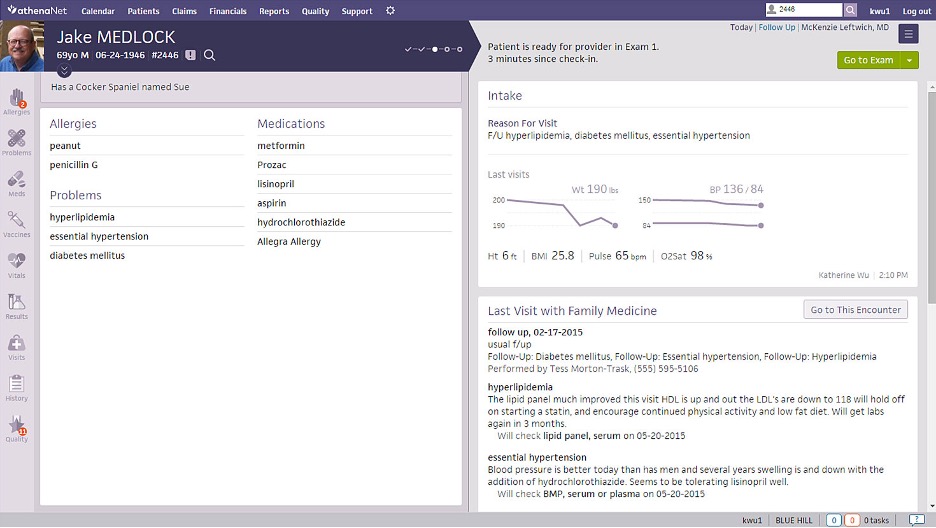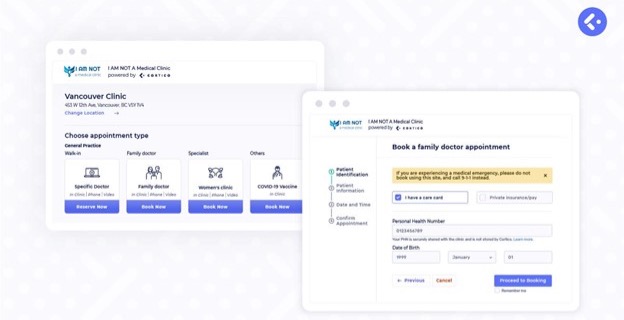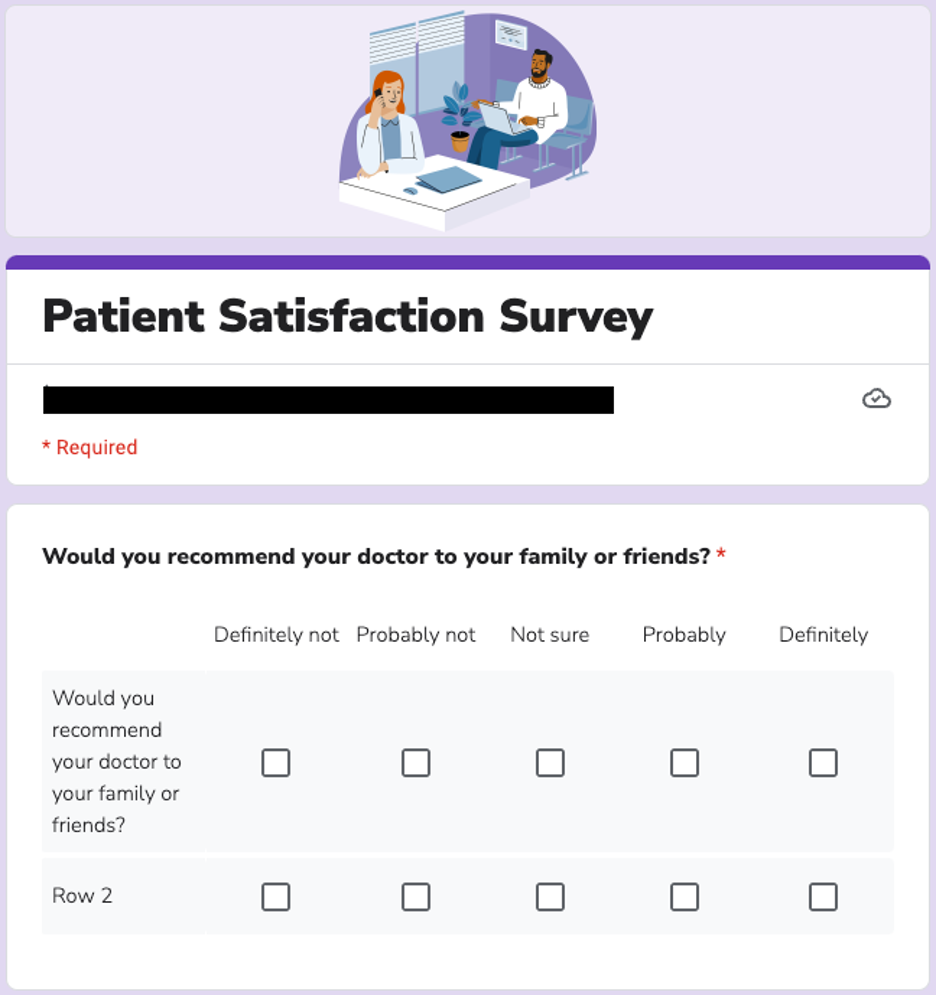How Patient Self-Scheduling Will Help Your Practice
Allowing your patients to self-schedule their appointments is an easy way to gain appointment bookings. Without providing that ability to your patients, you may end up losing revenue, as well as the efficiency that self-scheduling appointments provides.
If you’re a small-practice owner or admin who is considering moving toward a patient self-scheduling model for the first time, you’ll want to delve into insights on how patient self-scheduling works, its potential impact on your profitability, and if it's worth the effort to set it up.
Below, you’ll hear from Dr. Michael Brusco [1], founder and medical director of Brusco Vision, in regards to how patient self-scheduling helped his practice improve his patients’ experience and increase revenue.
What is self-scheduling for patients?
With self-scheduling tools, patients can book, alter, or cancel their appointments from their smartphones or computers. Considering that consumers can book hotel rooms and flights on-demand online, it shouldn’t come as a surprise that they want greater control over scheduling their doctors’ appointments too.
Software you need to make self-scheduling a breeze
Implementing patient self-scheduling, while not complicated, should mean that you start by evaluating your current tech stack to see where you can easily integrate it into your practice.
Electronic health records (EHR) software
Electronic health records software is a collection of features and tools that allow medical providers to create, store, and update patients' digital health records more easily and more securely than paper charts. We’ve listed a few of the most important features below:
Digital charting for patients’ medical records.
E-prescribing.
Integration with other types of important software such as patient portals, medical billing, or patient intake software.
The ability to enter, store, and transmit orders for lab tests, medication orders, and other services.
Decision support for patients via automated treatment alerts, reminders, or recommendations.

athenaOne’s patient chart (Source)
Patient portal software
A patient portal is a secure online website or application available either from a desktop, laptop, or mobile device and gives patients access to their personal medical information or updates provided by their healthcare provider.
A growing number of EHR software vendors offer patient portals which allows patients to schedule appointments online. Aside from patient self-scheduling, patient portals come with a plethora of features that can help improve patient engagement for your practice:
Direct communication with their provider via direct messaging
Receiving test results
Paying their bills

CORTICO’s patient scheduler (Source)
Standalone patient scheduling software
If you’re only looking for help with your scheduling, the most relevant software of all is standalone patient scheduling software. The primary goals are to help practices automate the appointment process, maximize the number of patient visits, and minimize no-shows and cancellations.
Standalone patient scheduling software comes with a few benefits:
Organization and efficiency
Improved provider-patient communication
Improved patient experience
Reduced no-shows
Same-day appointments

An example of patient scheduling dashboard in NueMD (Source)
Case story
Scheduling without patient self-scheduling
“Years ago (before being referred to our online scheduling system by a colleague), our team scheduled patient appointments through a hybrid manual-and-electronic approach. Since our office provides a very unique boutique-like patient experience, we are entirely paperless and have only ever used an electronic medical record (EMR) system.
All of our documents and patient exams are recorded and saved electronically and securely through the cloud. Within our EMR, there is a scheduling function that keeps track of what we enter and all appointments from any computer.
In the past, new patients could only schedule an appointment with us by calling our office and asking what days and times were available. Our team members would then take that information and enter it into the computer scheduling system.
There was nothing wrong with this, per se, but through our own patient surveys we found that many people would prefer to book their appointment day/time online through our website if they were given that option.
At our practice we have a motto: We have no qualms investing in technology if it improves our patients lives, it improves our lives, or if it improves surgical outcomes. Online scheduling checks the first two boxes.”
- Dr. Michael Brusco, Brusco Vision
Benefits of patient self-scheduling for your practice
Patient self-scheduling reduces the chances of patient no-shows, enhances revenue, and improves operational efficiency.
Dr. Brusco outlines several key benefits of patient self-scheduling that his practice has experienced first hand:
On the benefits of patient self-scheduling
“The biggest benefit of online scheduling through our website is that patients can book their appointment on their own time. It’s easy to forget that not everyone has the same schedule. Some people are night owls and prefer to do their daily tasks when our office isn’t open to take phone calls.
Many of our clients are pilots, nurses, police officers, drivers, etc. who routinely work night shifts and sleep during the day when our office is normally open. It is more convenient for them to schedule a consultation online than to call our office.
Additionally, patient self-scheduling frees up the prospective patient’s time. With one or two clicks, a patient can easily schedule an appointment.
While it is true that most phone calls don’t require much of a time commitment, for a very busy person, those one or two clicks will make a difference compared to a one or two minute phone call (plus, many people just dislike talking on the phone when they don’t have to…).”
- Dr. Michael Brusco
According to our 2022 Software Advice Patient Experience Survey*, 31% of patients found that scheduling the appointment was the largest pain point related to their most recent doctor’s visit. That’s one-third of your patients that might find scheduling an appointment a barrier to visiting your practice.
In addition to the benefits that Dr. Brusco has experienced, there’s a few more:
Reduced patient no-shows: No-shows eat into healthcare providers’ timetables and potential revenue. Typically, patient self-scheduling tools have features that send alerts, notifications, or calendar reminders to patients, reducing no-shows. And patients are more likely to show up when they schedule appointments based on their own convenience (within the time slots you’ve provided).
Increased practice efficiency: With the right self-scheduling tools, the medical staff is able to invest more time into other important tasks rather than evaluating appointments or creating waiting lists of patients. In fact, Dr. Brusco saw this play out in real time:
Dr. Michael Brusco
Other resources you might need to implement patient self-scheduling
While patient self-scheduling is easier than ever to implement, thanks to the advancements in medical software, it’s not as simple as purchasing software to get a healthy patient self-scheduling program up and running.
Here are a few other things outside of buying the software that you need to consider before implementing patient self-scheduling:
Is your patient population comfortable using tech?
Your patients might not be the best fit for navigating slightly more complex patient self-scheduling software.
Dr. Michael Brusco
A great way to determine whether or not your patient population would benefit from self-scheduling is to conduct patient experience or patient satisfaction surveys.
If you don’t know where to start when it comes to creating a patient satisfaction survey, we created a simple, easy-to-use survey template that you can use as is or modify to better suit your practice.

A screenshot of Software Advice's free Patient Satisfaction Survey Template
Will patient self-scheduling offer any significant ROI?
Software isn’t free, and while some options are more affordable than others, you still need to determine whether or not investing in patient self-scheduling software will provide you with a return on investment (ROI).
Aside from giving you a better indication of your patient population’s feelings on tech, those patient surveys are also a great way to determine if scheduling is a significant pain point or barrier for your patients.
As Dr. Brusco mentioned above, some patients simply do not like talking on the phone or have schedules that don’t allow them to easily make appointments during your operating hours. If you’re losing out on patients because you aren’t offering self-scheduling, you should invest to retain your current patient roster, but also to expand it.
Does your staff feel comfortable explaining and educating patients about software?
Let’s say you’ve purchased scheduling software. That’s not enough to be successful. You have to train your staff to educate patients on how to best use it.
Make sure your patients know how to use the technology you offer from the first moment they visit your office. Create an educational how-to on your website for patients to reference whenever they’re scheduling an appointment. Have your staff bring up patient self-scheduling before or after every single appointment so it's always top of mind.
Follow these best practices for effective patient self-scheduling
Cheers if you’ve decided to implement a patient self-scheduling tool in your practice. But consider these best practices to maximize its value.
Define time blocks for patient visits: Sit with your team to decide on specific time blocks during which you will allow your patients to self-schedule their appointments. Additionally, the support staff can use the remaining time blocks to complete other administrative tasks.
Use an automated reminder system to remind patients: If the self-scheduling tool of your choice doesn’t offer features for sending out patient reminders, use an automated reminder system to text or call your patients before their appointment. Some systems provide your patients the ability to reschedule or cancel their appointments—up to a specific point in time—by responding to the reminder itself. Be sure patients are aware of your practice’s cancellation policy, which may include a cancellation fee.
Prepare daily patient waiting lists to accommodate previous cancellations and no-shows: Patient no-shows and late cancellations cannot be eliminated completely—but you can leverage those opened-up time slots. For this, you can maintain a daily waiting list of previous no-shows and cancellations that you can accommodate in the freed-up slots.
Collect and assess scheduling data: If you want to reduce patient no-shows/cancellations and maximize your practice’s productivity, analyze your scheduling data regularly. This will help you identify no-show/cancellation patterns and determine ways to address the issues.
Patient self-scheduling is an important part of most successful modern healthcare providers
A successful implementation of patient self-scheduling will not only save you and your staff time so that you can focus on more meaningful and impactful problems, but you’ll also be improving patient experience which will result in more patient visits, more referrals, and better revenue.
Dr. Brusco has some last words of advice about implementing patient self-scheduling:
Dr. Michael Brusco
When it comes to helping you find the perfect software for your practice, we’re the best first step. We’ll help you find the right software for your needs and budget in 15 minutes or less for free. Schedule a call or click here to chat with a software advisor now.
Survey methodology
* Software Advice's 2022 Patient Experience Survey was conducted online in October 2022 among 1,001 respondents in the U.S. Respondents were all adults who had visited a healthcare provider within the past three years.